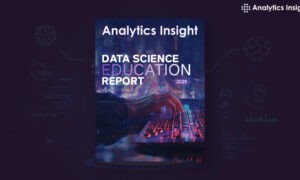What Are the Big Data Trends in 2023?
From a larger focus on DataOps and Stewardship to the need for innovation in Big Data storage, here are 14 answers to the question, “What are the most interesting trends in big data?”
- DataOps and Data Stewardship Move to the Fore
- Customizable Dashboards Will Address Specific Needs
- More Spotlight on Dark Data
- IoT Giving Real-time Analytic Feeds
- AI and Machine Learning Are Game Changers
- Distributing Computing
- Developing Predictive Analytics
- Citizen Data Scientists Rising in Prominence
- Edge Computing
- Deep Learning from Cognitive Engagement
- Machine Learning’s Use in Disease Diagnosis
- Shifting to Data Lakes
- An Increasing Need for Security
- Big Data Storage Needs Spur Innovations in Cloud and Hybrid Cloud Platforms
DataOps and Data Stewardship Move to the Fore
As the amount of data continues to grow, there has been an increasing focus on managing it more effectively. That’s where DataOps and data stewardship come into play as top trends in the field of Big Data.
DataOps involves the development, testing, and deployment of data pipelines to ensure that information is accessible to relevant stakeholders in a timely manner. Meanwhile, data stewardship refers to the management of data assets throughout their life cycle, ensuring that they are properly maintained, secured, and governed.
Together, these trends are helping organizations optimize their data management processes and make more informed decisions based on reliable, accurate data. As the importance of data-driven insights continues to rise, DataOps and data stewardship will only become more critical for success in the world of Big Data.
Saneem Ahearn, VP of Marketing, Colorescience
Customizable Dashboards Will Address Specific Needs
For some businesses, the predefined dashboard is tantamount to shoving a square peg into a round hole, and this has led to the Big Data trend of customizable dashboards. Every business is unique and has specific priorities, but a dashboard that misses metrics that are vital to its profitability and sustainability does little good in helping it to design its plans and achieve success.
Considering these specific needs, as well as new conditions, flexible and customizable dashboards have been hitting the market, allowing business owners and their teams, regardless of their technical expertise, to design their own. As the use of Big Data becomes just as dependent on the specifics as it does on the quantity, the customizable dashboard trend will continue to gain in popularity.
Cody Candee, CEO, Bounce
More Spotlight on Dark Data
Dark data is any data a company doesn’t use within its analytics. With more data at our fingertips and tech driving down the costs to conveniently collect it, most organizations are also seeing an expansion in dark data.
Expect to see more organizations actively working to categorize and understand dark data. When it goes ignored, it presents a growing security risk that could put businesses and their sensitive data in jeopardy.
Shawn Plummer, CEO, The Annuity Expert
IoT Giving Real-time Analytic Feeds
Advancing technology is allowing companies to crunch big data quickly, and the growth of the IoT is helping us to access this data in real time.
We’re staying connected 24/7 through these countless devices, and each one can feed rich data into the system without delay and data gaps. Through the IoT, we’re seeing businesses take advantage of real-time data analytics with AI-based tech that can immediately respond.
Ruben Gamez, Founder and CEO, SignWell
AI and Machine Learning Are Game Changers
One major trend in big data is the increasing use of AI and machine learning algorithms to extract insights and make predictions from large volumes of data. This approach enables organizations to identify patterns and relationships in data that may be difficult for humans to comprehend.
Integrating AI and machine learning into data analytics transforms how big data is processed, analyzed, and acted upon, which will help revolutionize many different sectors.
David Watkins, Director of Product Management, EthOS
Distributing Computing
Distributed computing is a trend in big data that has been gaining traction in recent years. This approach involves distributing large datasets across multiple nodes in a cluster or network, allowing for faster processing and more efficient use of resources.
There are several reasons distributed computing is effective in handling big data. First, it allows for greater scalability, as more nodes can be added as needed. Second, it improves fault tolerance, as we can replicate data across multiple nodes, reducing the risk of data loss or system failures. Third, distributed computing enables more efficient processing of large datasets, as computations can be parallelized across multiple nodes.
Victor Mathieux, Co-founder and CEO, Miracle Brand
Developing Predictive Analytics
The development of predictive analytics is one of the key trends in big data. To find patterns and forecast future results and trends, predictive analytics makes use of historical data.
Businesses may then use the insights they gain from their data to make better decisions, increasing their efficiency and production. It enables more precise forecasting, risk management plans, consumer segmentation, and focused advertising campaigns.
The use of predictive analytics can help firms identify fraud and enhance their security protocols. Predictive analytics has grown to be an indispensable tool in big data analysis thanks to its strong capabilities.
Benjamin Okyere, Founder and CTO, Otto’s Journal
Citizen Data Scientists Rising in Prominence
As more companies realize the potential that Big Data can help them achieve, there will be an increased demand for citizen data scientists. There are data-literate individuals who are not fully-fledged data scientists, hence they can communicate the data between different departments with little technicality. Their role is crucial in bridging the current data knowledge gap, and as Big Data continues to grow, so will the importance of these individuals.
Liam Liu, Co-founder and CMO, ParcelPanel
Edge Computing
One trend in Big Data is edge computing, which involves processing data closer to the source of generation, such as sensors or IoT devices, rather than sending it to a centralized location. By reducing the need for data to be transferred over long distances, edge computing enables faster processing, lower latency, and reduced bandwidth requirements.
This approach is especially beneficial for applications that require real-time processing and decision-making, such as autonomous vehicles or industrial control systems.
Michael Chen, Growth Director, Notta
Deep Learning from Cognitive Engagement
A recent study shows that 77% of devices are using AI technology, and experts have forecasted that by 2024, there will be around 8.4 billion AI-powered digital voice assistant units in the world.
With businesses relying on AI for help in getting things done, one of the emerging trends in Big Data has almost replicated, if not exceeded, human capabilities.
Deep learning uses large amounts of data that are optimized and defined to ensure accuracy.
Having the ability to perform physical and analytical tasks, improve automation, and extract data without human intervention, deep learning has been embedded in most products and services to improve customer experience and business processes.
Becky Moore, Founder, Global Grasshopper
Machine Learning’s Use in Disease Diagnosis
Big Data has enabled machines to store billions of pieces of essential data that help streamline processes across industries. In healthcare, machine learning plays an invaluable role in accelerating disease diagnoses.
For example, machine learning can now assist physicians in reading and interpreting medical imaging. The technology compares data input from previous case histories to real-time imagery to help deduce diagnoses.
This, in turn, benefits the patient because they receive results much sooner than they would have in years past. The sooner patients can be given a diagnosis, the sooner they can begin seeking treatment and making strides to restore their wellness.
Alex Milligan, Co-founder and CMO, NuggMD
Shifting to Data Lakes
There are certain trends in big data, but one that I believe is on the rise is data lakes. Data lakes are a new type of architecture that is changing the way companies store and analyze data.
Relational databases were once used to store data in organizations. The problem with this type of storage is that it is too structured to store a wide range of data types, including images, audio files, video files, and so on.
Sarrah Pitaliya, Head of Digital Marketing, Radixweb
An Increasing Need for Security
One trend in Big Data you should track in 2023 is the increasing need for security. In today’s digital landscape, data breaches are increasingly frequent and show no signs of slowing down. As such, organizations must prioritize their investment in security measures in order to remain proactive and ahead of potential threats.
Businesses place immense importance on security because a data breach that discloses their customers’ sensitive information without consent could severely damage their reputation and undermine their ability to retain clients.
Michał Pożoga, Vice President of Marketing, ConQuest Consulting
Big Data Storage Needs Spur Innovations in Cloud and Hybrid Cloud Platforms
Organizations are investing more of their resources in storing this data in a variety of cloud-based and hybrid cloud systems that are designed for all the V’s of big data in order to deal with the inevitable rise in data generation.
In prior decades, businesses managed their own storage infrastructure, which produced enormous data centers businesses had to oversee, secure, and run. Cloud computing has altered that dynamic.
Organizations can handle practically infinite amounts of new data by delegating responsibility to cloud infrastructure providers like AWS, Google, Microsoft, Oracle, and IBM, and pay for storage and processing power on demand without having to manage their own massive and intricate data centers. Certain sectors face difficulties using cloud infrastructure because of legal or practical restrictions.
Jay Soni, Marketing Director, Yorkshire Fabric Shop
Related Articles



































